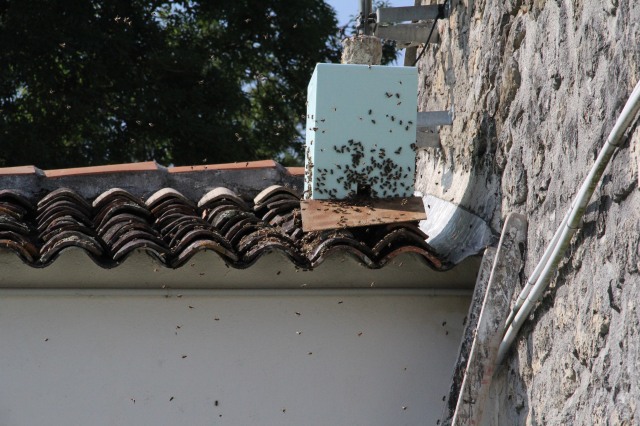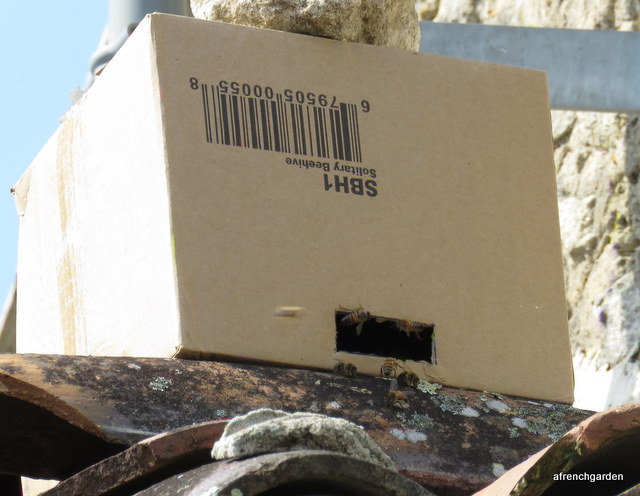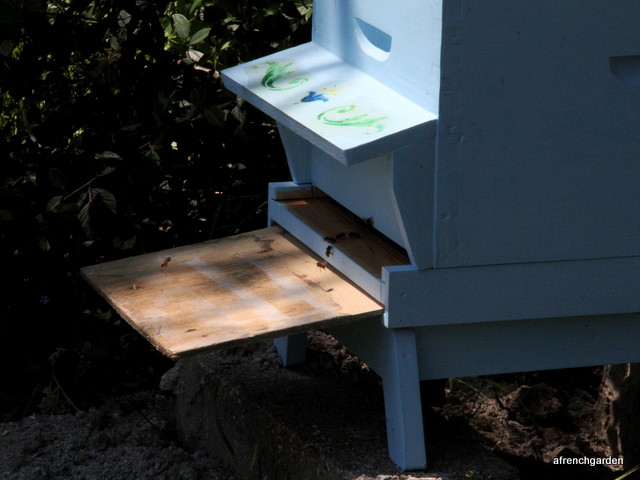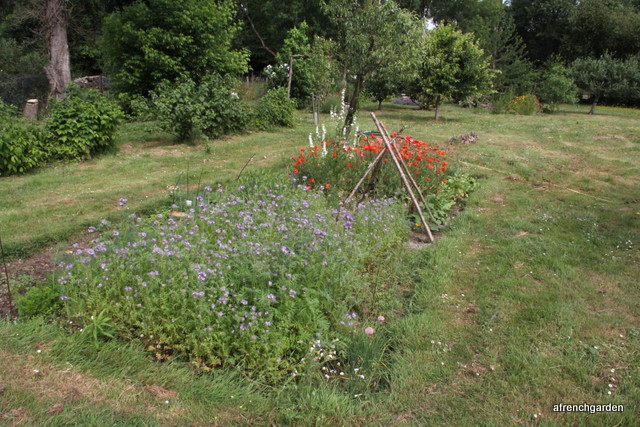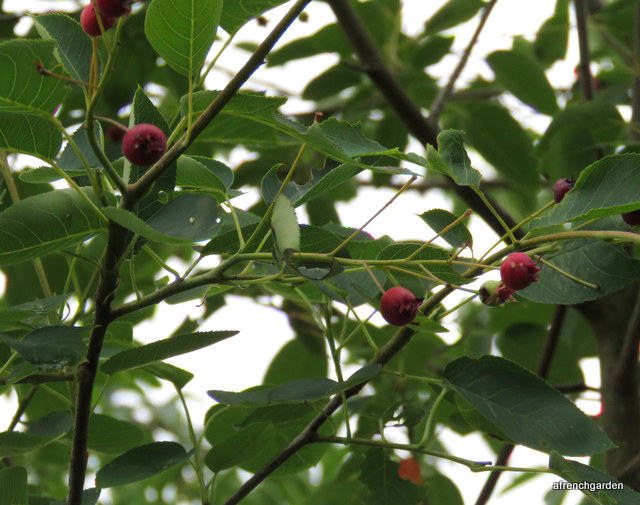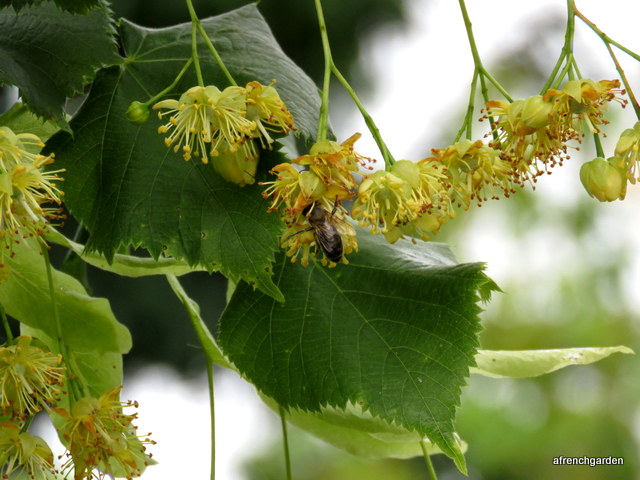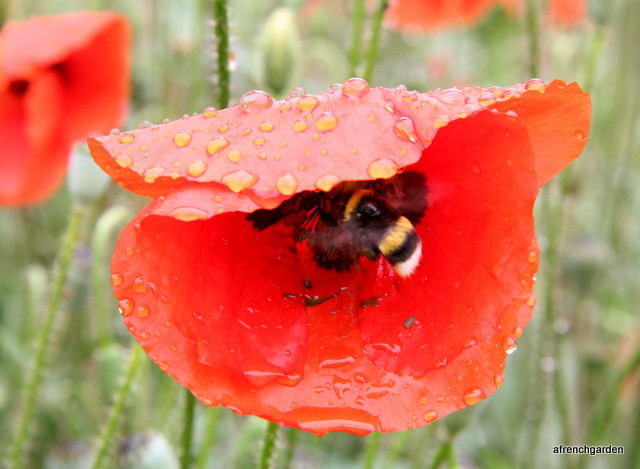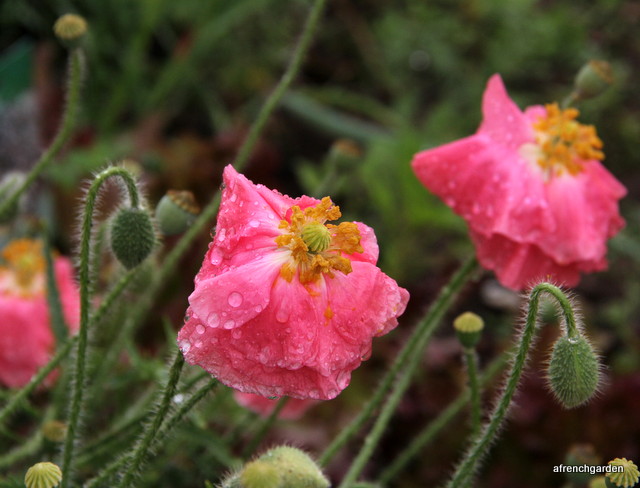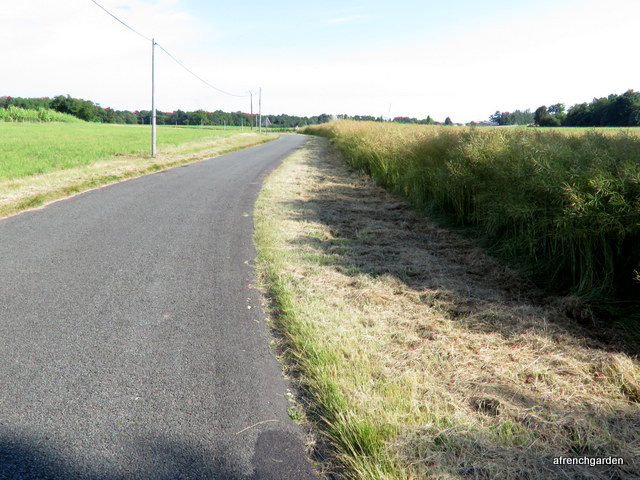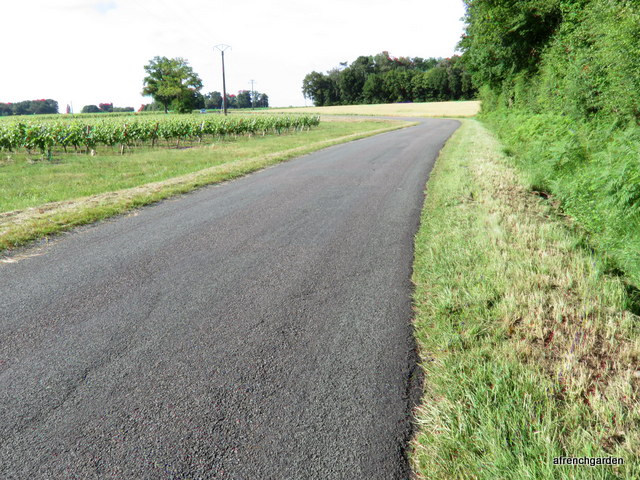This week has been a busy “bee” week. We had been sure that the bees had intended to swarm into the ruchette before we left on holiday but they obviously delayed their arrival until we were back home. This time we missed the exciting arrival as we were working in the backgarden during the afternoon and it was not until 6.00 p.m. that we realised what was happening. Just over an hour later all looked quiet so perhaps it is a smaller swarm than the first. We have left them in peace but whatever the size it is an extremely active swarm and was happy to join the first one at the bottom of the garden.
When the last swarm was moved to the bottom of the garden some stragglers kept returning to the spot on the roof where it had been. They looked very pathetic huddled together in a ball at night time and we tried to brush them off into a box and release them near the new emplacement. As they seemed so reluctant to move the last time, Kourosh constructed a mini cardboard hive and put it on the roof where the ruchette had been.
We put some hastily made hard sugar and water mix (faux candy) to keep them going and the next night they were swept into their box and unceremoniously united with their swarm at the bottom of the garden. So we did not have to endure watching any homeless bees passing and re-passing over the roof.
It is not that Kourosh is over anxious but he has put an extension board in front of the hive because he noticed that some of his girls were so heavy with pollen when they returned to the hive in the morning that they missed the entrance and landed on the stone underneath. He is a lot happier now that they have a longer runway.
My Phacelia patch is in full flower now but I am disappointed with its pulling power.
I am getting a reasonable number of bumble bees but not more than I get on borage or nepeta or a lot of other flowers. I have not seen any other bees but I have been busy. Perhaps this gives me an excuse to stand and stare for longer, just to make sure. I would love to hear about other peoples’ experience with Phacelia.
These are the last berries growing in my Amelachier. I had read in a post of New Hampshire Garden Solutions earlier in the year that the berries were edible and was looking forward to trying them. I tried the first few berries that ripened and found them sweet and delicious. My intention was to harvest them all but the birds stripped the tree before I got the chance – they went the same way as our cherries go every year.
The Linden tree (Tilia platyphyllos) has started to flower. I love its perfume and I also love the tea made with the flowers so I must remember to collect some before the flowers are over or spoilt b the rain as we have been having some thundery episodes.
After a night of particularly heavy rain I was surprised to see the poppies being worked early in the morning while still wet.
The bumbles are hardy bees and fly in much cooler and inclement weather than many bees. However, these poppies must provide very valuable pollen to make it worthwhile for the honeybees too. The poppies higher petals bend over like an umbrella keeping bee and pollen dry.
The double pink poppies alongside the red poppies were not being visited by the bees as their petals turned outwards and the pollen had soaked up the rain making it far too heavy for the bees to carry.
Talking about bees – and I know I tend to a lot – one has left what looks like a diamond in the bamboo sections. I can’t take a better photograph but it actually sparkles and appears to have facets. I would love to know what it is. I have seen the bamboo being closed with a substance that reflects like a mirror but it has a flat appearance and I thought that those could be possibly made by Hyaeus bee species.
This week the powers that bee (sorry be!) have mowed or rather shaved all the roads around us making the place look extremely sterile. This is where I see so many wild bees on the wild flowers in springtime. Some more will push through but in the meantime?
It seems practical steps in helping pollinators is taking a long time to arrive at grass root level. Jeff Ollerton explains how important a later mowing of these verges could be in his Biodiversity Blog.
It’s not often a cute furry mammal makes its way into my blog.
Actually, the photographs were taken by Kourosh as he watched the hare (Lepus europaeus) from the kitchen window. We often see hares in the nearby fields but we have had no trouble from them in the vegetable garden.
We have no problem with this one either as it is heading straight to the neighbours garden!


